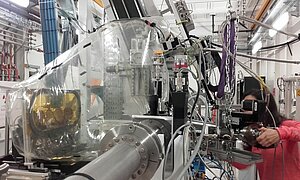Molybdenum plays import roles in catalytic and biological processes, and while Mo K-edge X-ray absorption spectroscopy (XAS) has had a significant impact on our understanding of the geometric and electronic structure of Mo-containing metalloenzymes (i.e. nitrogenase), Mo Kβ X-ray emission spectroscopy (XES) has yet to be explored in bioinorganic chemistry.
In a recent publication, a team of MPI CEC scientists of the Department of Inorganic Spectroscopy and the MPI für Kohlenforschung present for the first time a systematic study of Mo Kβ XES with comprehensive analysis of these transitions through correlation of the experimental data with computational studies, demonstrating the sensitivity of the technique to changes in oxidation state, spin state, and metal-ligand interactions.
Study of synthetic Mo-Fe cubane clusters as models of the nitrogenase active site highlight the potential applications of this technique for elucidating second-row transition metal centers in biological systems.
Original Publication: Castillo, R., Henthorn, J., McGale, J., Manganas, D., DeBeer, S. Kβ X‐ray Emission Spectroscopic study of a second‐row transition metal (Mo) and its application to nitrogenase related model complexes. Angewandte Chemie International Edition. <link https: doi.org anie.202003621 _blank>

